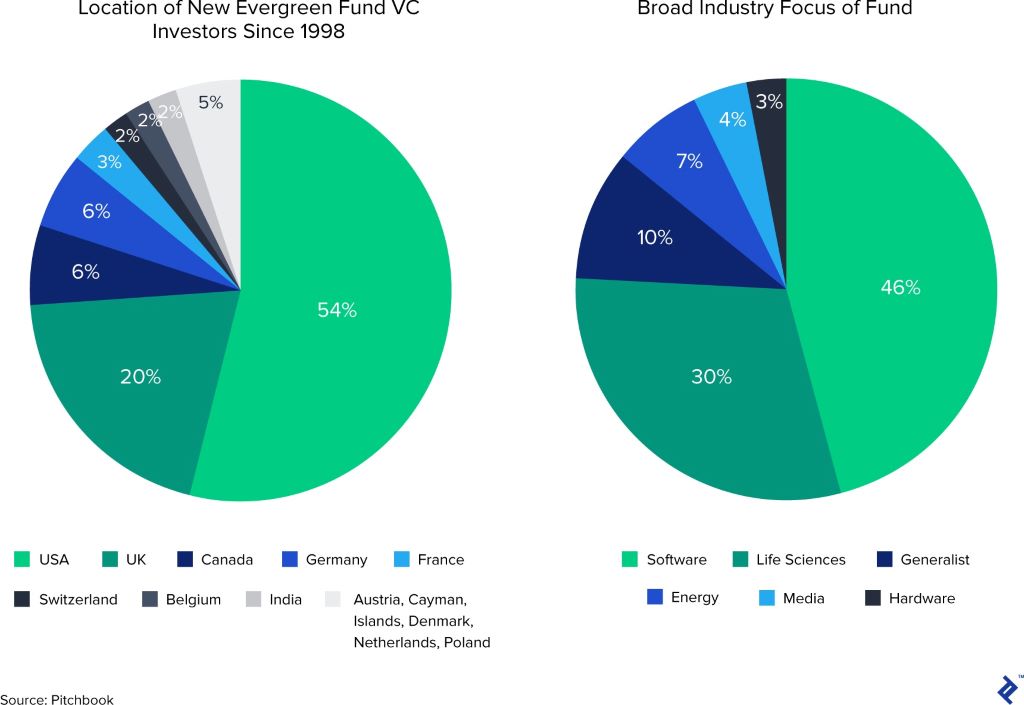Evergreen fund valuation presents unique challenges that traditional investment analysis often overlooks. These perpetual investment vehicles require specialized approaches to determine their true worth. Investment professionals at Mari Gold Commerce regularly encounter clients seeking clarity on these complex valuation methodologies.
Understanding the Foundation of Evergreen Funds
Before diving into valuation methods, investors must grasp the basic structure of these investment vehicles. Unlike traditional funds with fixed terms, evergreen funds operate indefinitely without predetermined end dates. This perpetual nature creates both opportunities and valuation complexities.
Additionally, understanding the evergreen fund meaning becomes crucial for proper valuation assessment. These funds continuously accept new investments while allowing existing investors to redeem shares. Therefore, valuation must account for ongoing capital flows and varying investment horizons.
Net Asset Value Method
The Net Asset Value (NAV) method represents the most straightforward approach to evergreen fund valuation. This method calculates the fund’s total assets minus its liabilities, divided by outstanding shares. However, applying NAV to evergreen funds requires careful consideration of unique factors.
Calculating Accurate Asset Values
Evergreen funds often hold illiquid investments that challenge traditional valuation approaches. Real estate, private equity stakes, and alternative investments lack daily market prices. Therefore, fund managers must rely on appraisals, comparable transactions, and discounted cash flow models.
Furthermore, the timing of valuations becomes critical. Many evergreen funds update asset values quarterly or annually rather than daily. This creates potential discrepancies between reported NAV and actual market conditions.
Liability Considerations
Evergreen funds face ongoing redemption requests that create contingent liabilities. These potential outflows must factor into valuation calculations. Additionally, management fees and performance incentives represent ongoing liabilities that affect net asset calculations.
Discounted Cash Flow Analysis
The discounted cash flow (DCF) method provides a forward-looking approach to evergreen fund valuation. This method projects future cash flows and discounts them to present value using appropriate discount rates. However, DCF analysis requires careful assumptions about fund performance and cash flow patterns.
Projecting Future Distributions
Evergreen funds typically generate income through rental payments, dividends, and capital appreciation. Projecting these cash flows requires detailed analysis of underlying investments and market conditions. Moreover, the perpetual nature of evergreen funds complicates long-term projections.
Selecting Appropriate Discount Rates
Choosing the right discount rate significantly impacts DCF valuations. The rate must reflect the fund’s risk profile, investment strategy, and market conditions. Additionally, evergreen funds often invest in illiquid assets requiring higher discount rates than publicly traded securities.
Comparable Fund Analysis
Comparing evergreen funds to similar investment vehicles provides valuable valuation insights. This method examines trading multiples, performance metrics, and structural features of comparable funds. However, finding truly comparable evergreen funds can prove challenging.
Identifying Relevant Comparables
Effective comparable analysis requires funds with similar investment strategies, geographic focus, and target returns. The fund size, management team experience, and track record also influence comparability. Therefore, analysts must carefully screen potential comparables to ensure relevance.
Adjusting for Differences
Even closely comparable funds exhibit differences requiring valuation adjustments. Factors such as leverage levels, fee structures, and liquidity terms affect relative valuations. Additionally, market conditions at different fund vintages can create valuation disparities.
Sum-of-the-Parts Valuation
The sum-of-the-parts method values individual fund investments separately before aggregating results. This approach works particularly well for evergreen funds holding diverse asset portfolios. However, it requires detailed knowledge of each underlying investment.
Individual Asset Valuation
Each portfolio company or property requires separate valuation using appropriate methodologies. Public holdings use market prices while private investments require appraisals or modeling. Furthermore, the valuation method must match the specific asset type and available information.
Portfolio Diversification Effects
Simply adding individual asset values may overstate or understate total fund value. Diversification benefits can increase overall value while concentration risks may decrease it. Therefore, analysts must consider portfolio-level effects when aggregating individual valuations.
Market-Based Valuation Approaches
Secondary market transactions provide valuable pricing information for evergreen fund interests. When fund shares trade between investors, these transactions reveal market-determined values. However, secondary market activity for evergreen funds remains limited.
Secondary Market Premiums and Discounts
Evergreen fund interests often trade at discounts to reported NAV due to liquidity constraints and uncertainty. According to Preqin, secondary market transactions for alternative investment funds frequently occur at 10-20% discounts to NAV, reflecting liquidity and information asymmetries.
Transaction Volume Considerations
Limited secondary market activity can distort pricing signals. Low transaction volumes may not reflect broad market sentiment about fund values. Additionally, distressed sellers might accept below-market prices, skewing valuation benchmarks.

Performance-Based Valuation Methods
Some analysts value evergreen funds based on their ability to generate returns above benchmark indices or target rates. This approach considers the fund’s track record, management quality, and competitive positioning. However, performance-based methods require careful interpretation.
Risk-Adjusted Return Analysis
Evaluating returns relative to risk provides more meaningful valuation insights than absolute performance measures. The Sharpe ratio, alpha generation, and downside protection metrics help assess fund quality. Furthermore, longer track records provide more reliable performance indicators.
Management Team Assessment
The experience and track record of fund managers significantly influence valuation. Successful managers with proven strategies command premium valuations. Additionally, team stability and succession planning affect long-term value creation potential.
Challenges in Evergreen Fund Valuation
Several factors complicate evergreen fund valuation beyond traditional investment analysis. These challenges require specialized expertise and careful consideration of fund-specific factors.
Liquidity Constraints
Unlike publicly traded investments, evergreen fund interests often face redemption restrictions and gate provisions. These liquidity limitations affect valuation through reduced flexibility and potential discounts. Moreover, lock-up periods and redemption fees further complicate valuation analysis.
Information Asymmetries
Evergreen funds typically provide less frequent and detailed reporting than public companies. This information gap creates uncertainty about current fund performance and portfolio composition. Therefore, valuations must account for this reduced transparency.
Regulatory and Tax Considerations
Regulatory requirements and tax implications affect evergreen fund valuations in various jurisdictions. Understanding these factors becomes essential for accurate valuation analysis. Additionally, changes in regulations can significantly impact fund values.
Valuation Standards Compliance
Many jurisdictions require evergreen funds to follow specific valuation standards and obtain independent valuations. These requirements aim to protect investors but can influence reported values. Furthermore, audit requirements may necessitate conservative valuation approaches.
Technology and Valuation Innovation
Emerging technologies are transforming evergreen fund valuation processes. Artificial intelligence, machine learning, and big data analytics provide new tools for valuation analysis. However, traditional valuation principles remain fundamental to accurate analysis.
Data Analytics Applications
Advanced analytics help identify valuation patterns and improve forecasting accuracy. Machine learning algorithms can process vast amounts of market data to enhance comparable analysis. Additionally, automated valuation models reduce manual effort and potential errors.
Conclusion
Evergreen fund valuation requires sophisticated analysis combining multiple methodologies and careful consideration of unique characteristics. The perpetual nature, liquidity constraints, and diverse asset holdings create valuation challenges not found in traditional investments. However, combining NAV calculations, DCF analysis, comparable fund studies, and market-based approaches provides comprehensive valuation insights. Additionally, understanding performance metrics, regulatory requirements, and technological innovations enhances valuation accuracy. Therefore, investors and analysts must develop specialized expertise to properly evaluate these complex investment vehicles.
Frequently Asked Questions
Q: What makes evergreen fund valuation different from traditional fund valuation? A: Evergreen funds operate indefinitely without fixed end dates, creating ongoing cash flows and redemption obligations. This perpetual structure requires different valuation approaches than traditional funds with predetermined terms and exit strategies.
Q: How often should evergreen funds update their valuations? A: Most evergreen funds update valuations quarterly, though some provide monthly updates. The frequency depends on underlying asset types, regulatory requirements, and investor expectations. Real estate funds often value properties annually while funds holding securities may update more frequently.
Q: Why do evergreen fund interests trade at discounts in secondary markets? A: Discounts typically reflect liquidity constraints, information asymmetries, and uncertainty about underlying asset values. Additionally, redemption restrictions and gate provisions reduce flexibility, leading investors to demand discounts for these limitations.
Q: What role do independent appraisals play in evergreen fund valuation? A: Independent appraisals provide objective valuations for illiquid assets like real estate and private companies. These professional assessments help ensure fair value reporting and satisfy regulatory requirements, though they may lag current market conditions.
Q: How do redemption gates affect evergreen fund valuations? A: Redemption gates limit investor withdrawals during stressed market conditions, potentially supporting fund values by preventing forced asset sales. However, gates also signal potential problems and may lead to valuation discounts reflecting reduced liquidity and investor concerns.
Read More:
Why Compliance Matters for Small Businesses
Commodities in the UK Market: Key Trends and Investment Strategies

